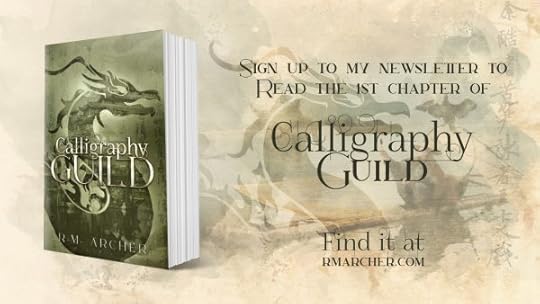R.M. Archer's Blog, page 15
February 22, 2022
5 Steps to Requesting a Book Review
Today we’re going to be discussing something that I’ve seen a fair amount as a fairly experienced writer/blogger: requesting book reviews. So we’re talking about when you have a book and you’re reaching out to bloggers, asking if they’ll review it for you. I’ve been on both sides of this exchange, and there are some steps I’ve seen missed (or missed myself) that I’ve found are a key part of the review requesting process. So today I’m going to walk you through the five steps of requesting a book review.
1. Know Your Target ReviewerFirst of all, make sure that the reviewers on your list make sense. If you’re releasing a Christian book, you’ll likely want Christian reviewers. If you’re releasing a middle grade novel, you’ll want to make sure that the reviewers on your list read middle grade.
While this applies to most of the reviewers on your list, you may want to have a couple of outliers who don’t normally read your genre or age group or whatever the case may be. These bloggers will be harder to “sell” on your book, so be sure you have a compelling reason to put them on the list. Maybe they don’t normally read middle grade, but your book is about mythology from a Christian worldview and you know they’re really interested in both of those topics. (If this is you, please contact me. That sounds amazing.) Or maybe sci-fi isn’t normally their genre, but you know they’ll resonate with the pro-life themes in your book. These reasons are no promise that the reviewer will say yes (there’s no promise even with reviewers who seem like they’d be a perfect fit), but they’ll give you a decent chance and they’ll get your book to a somewhat wider audience.
This is also where you’ll find out what you and your target reviewer have in common. What connection points can you mention to show 1) that you’ve done your research and 2) that you value their input specifically? For example, you might find that you’re both in your young twenties, or you both love Spider-Man, or you both drink tea. Do try to keep these things relevant to the book you’re getting reviewed—if you’re releasing a superhero novel, your shared love of Spider-Man might be relevant; if you’re releasing a fantasy novel, you might instead want to focus on your shared love of Tolkien—but these bits of connection will show that you chose this reviewer on purpose and you’re looking at them as a fellow author, reader, and person rather than solely a blogger that can review your book.
Sometimes, a mutual friend can be a good connection point! If you learned about this reviewer from another author who spoke highly of them, feel free to mention that. It will make the reviewer feel good, it will give them a bit of context to place you into, and the reviewer will likely trust you a little more if they can connect you to someone they already trust.
2. Introduce YourselfYou’ve done your research, you have your list of reviewers to contact, and now you’re ready to send out emails. Start out by saying hello and sharing a little bit about yourself! Who you are, why you’re contacting them, and perhaps a relevant link to your site. This is also where you’ll pull out those shared points of interest and/or mutual connections. You don’t want to go too long with your intro, but you want to use it to connect with the reviewer and get them interested in you and your book.
This section will likely transition right into…
3. Introduce Your BookNow that you’ve introduced yourself and connected with the interviewer, you want to introduce your book and get the reviewer invested in that. Give them a title, a brief blurb (this can be a back-cover copy or something more like an elevator pitch), and anything else you think they’ll want to know about your book. If it’s similar to something else they like, draw that similarity. If there’s content you think they ought to be aware of (either as a selling point or a warning), mention that. If there’s something that particularly makes your book stand out, that makes it perfect for this reviewer, mention it.
Again, don’t get too wordy, but try to put in whatever information will be relevant to this reviewer so they’ll be more willing to invest their time in your book. (And yes, I am saying you’ll want to tailor each email to its own individual recipient. You can rely on a core template with all of the general information, but put in the time and care to fill out around that base for each reviewer.)
4. Include Any Crucial Details (deadline, etc.)Besides information on what your book is about, don’t forget to include information on what you’ll need from the reviewer. What is the time-frame in which you’re looking to get reviews up? Do you have physical review copies or only digital? Where do you want them to post reviews (their blog, Amazon, Goodreads)?
5. Thank them for their timeAs a final point of etiquette, be sure to thank your target reviewer for their time! Whether they agree to review or not (or if they don’t have time for a review but offer some other help), thank them for the time they’ve invested in your request and/or your book.
Bonus: Make Notes for Next TimeIf they seem interested but don’t have the time right now, maybe make a note to reach out to them for your next book. If you find they’re not into your genre, make note of that. If they’re just really busy, maybe consider asking them for a spotlight next time rather than a full book review. Try to keep track of what authors you want to work with, and respect their time and preferences so that your partnership—whether now or in the future—will be fruitful for both of you and you can build up a relationship. Who knows; maybe down the road you’ll be exchanging reviews on the regular!
Have you reached out to reviewers before? Which step of this process is the hardest for you? Which do you enjoy the most?
The post 5 Steps to Requesting a Book Review appeared first on Scribes & Archers.
February 15, 2022
Family Roles in Fantasy Cultures
Last week we talked about courtship and marriage customs, and this week we’re carrying on the family thread by discussing family roles as a whole. What role do families play in the culture of your world, or in the lives of your characters? And are they such that you can get away with not killing your teen protagonist’s parents? Well, let’s find out.
Is Family Important to This Culture?The first thing to ask is whether or not family is appreciated in your culture. If your culture values individualism, family might be considered inconvenient. If your culture values community, family might be seen as the ultimate community or it might be seen as an obstacle to chosen community; it would depend on how your culture defines the community that they value.
But whatever your culture values, those principles will shape what family roles are considered important and which are disregarded or even seen as inconvenient. An individualistic culture might make children a matter of choice and ailing or elderly relatives a nuisance. A culture that values family highly is more likely to see children as a joy and the opportunity to care for older relatives a privilege.
What Family Roles are Expected?What is the expected family structure in this culture? A married couple? Simply a couple that’s together? Are children expected or considered optional? Are parents or grandparents part of the equation, or are they left behind when a new family is shaped? What about aunts, uncles, and cousins?
Do families encompass only blood relatives, or are others adopted in (either officially or unofficially)? What does it mean for those adopted to be treated as family? Do families share their resources? Are families responsible for the education of their members? Do families share work and business? Do family members protect one another? This is also a good place to ask how families might influence the culture around them. Families educating their own and sharing in similar work is a powerful means of shaping a whole culture, or at least a sub-culture, by raising up whole generations with a consistent worldview.
Once you know what structure is expected, ask what happens when families break the mold. Are people scoffed at for looking after their parents? Or, at the opposite extreme, ostracized for neglecting the elders in their family? Are couples without children pitied or admired? Are unmarried couples a scandal or a norm?
How Does Law Affect Family Roles?Are families influenced by governmental or religious input? Do religious couples view children differently from their neighbors who adhere to a different faith or no faith? Is building a family desirable for the sake of lower taxes?
And what laws are in place for the sake of families? What protections are in place to defend families from being split? At what point do those protections cease to apply? Are these protections just, or do they overprotect abusers or enable an excess of interference from a government or religious power?
How does adoption work in your culture? Is it a legal matter, a religious matter, or none of the above? Who can be legally adopted?
How Are Children Viewed?Do the families in your culture cherish their children or consider them an inconvenience? Or do they perhaps see children as a commodity, to be sought by those who want children and discarded by those who don’t? Are children valued for their own sake as people, or does this culture believe the value of children differs based on their proficiency in a particular area? Are children with special needs looked down upon, while “normal” children are praised?
Sadly, this is a topic ripe with worldview conflict, and your world might not be as idyllic as you wish it were. But it’s also an area where positive contrast can be powerful with the use of disagreeing cultures and sub-cultures.
A culture that values growth and life might place great value in children of all sorts, while a militaristic culture might see only their potential as future warriors and a religious culture might cherish the opportunity to share their faith with a new generation (for good or ill).
What Are the Family Roles of the Elderly?Are the elders of your culture’s families considered wise and worthy of respect? Or as weak (in, say, a militaristic society) or inconvenient (in an individualistic culture)? Are elders trusted with tasks like teaching and management, are they forced into retirement, or does it differ from family to family and elder to elder? Are elders appreciated for their knowledge of past ages and their ability to caution against history’s repetition, or are they considered traditional and over-cautious?
Related Post: How to Write Fictional Families
Do your books often feature families? Are those families in keeping with your culture’s values, or are they more counter-cultural? (I often enjoy writing a mix, personally.) Let’s chat family in the comments!
The post Family Roles in Fantasy Cultures appeared first on Scribes & Archers.
February 8, 2022
Creating Character Titles
A couple weeks ago, I wrote a post about the most important elements to develop in a fictional language to make the most impact on your readers with the least amount of effort. One of those elements was character titles, and I accidentally wrote a whole second blog post explaining those. I ended up having to backtrack and relocate half of what I’d written. XD Thus, this post was born, all about character titles.
I’ll be looking at the several types of titles that I briefly mentioned in “The Lazy Worldbuilder’s Guide to Conlang“: titles of address, titles of reference, titles of relation, and titles that substitute for a name.
Disclaimer: Links to my WorldAnvil articles have an affiliate tag, meaning if you register for WorldAnvil through one of those links and subscribe to a paid tier within fifteen days, I get a commission at no extra cost to you.General Principles
Before we get into specifics, there are some principles that can be applied to any manner of character titles. (If you’ve read my previous conlang post, these may sound familiar since I included them in my character titles summary for that post.)
If a particular title is especially important to your culture, you might want multiple translations for it. For example, Virilia has a word for “grandmother” (“Lonpia-Meuma”) and a word for an honorary grandmother (“Dachia-Meuma”). Matriarchal types are respected for their wisdom and considered to bear similarities to the overseeing goddess Chiean, so “grandmother” is an important title to Virilens.
In titles that are commonly used, you can also consider how it might be shortened or adapted over time. “Lonpia-Meuma” is the technical term for “grandmother,” and some use the full title, but many Virilens shorten it to “Lonpaia” (more akin to “Grandma”). A small child might shorten it even further to “Lona,” giving it yet another variation that adds realism to your world without a whole lot of effort.
Another element to consider would be the format of your titles. Do titles stand in for a name, or do they accompany it? Are they paired with the first name or the last name? Do they come before or after the name? Are they hyphenated to the name (e.g. “Zen-Misonh”), abbreviated before or after the name (e.g. “Mr. Smith”), written in full before or after the name (e.g. “Monsieur Du Lac”)?
Titles of Address
The first step to creating terms of address is determining who will use them and who they will be attributed to. Do characters under a certain age refer to their elders by a title? Are titles earned by merit of class or accomplishment? Are titles used for everyone until a certain point of familiarity? If so, is there a certain age at which characters receive their title? Do titles help to show familiarity, with a formal version and a more casual version?
Titles in Virilia are used by pretty much everyone, for pretty much everyone. There are different titles for women depending on marital status, and different titles for both genders depending on formality. For example, “Merasona” refers to an unmarried woman you’re not very familiar with, while “Mera” refers to an unmarried woman you are familiar with (perhaps a friend, a sister-in-law, or a particularly close co-worker). You don’t drop someone’s title unless you’re family or nearly family (for instance, a courting couple will drop each other’s titles). The same formality modifier (“sona”) applies to all feminine titles, and the same formality modifier (“sonh”) applies to all masculine titles.
As a couple of different examples, titles in Eilis are given by class—members of a lower class must refer to those in upper classes with their titles; and titles in Alger are given by accomplishment—stronger warriors are referred to with titles, while less experienced warriors have no titles to speak of.
Titles of Reference
With titles of reference, the starting point is to ask what positions are worth referencing. Does your culture have kings? Nobles? The criteria for reference-based titles usually come down to respect and scarcity. If one or the other is lacking—if the position is one that few people hold, but it’s not held in high regard; or if it’s held in high regard, but there are many characters in the position—it won’t usually warrant a title.
For example, a particular culture might hold gardeners in especially high regard. If this leads to the position of gardener requiring a lot of specialized training and gardeners being a novelty, then that culture might develop a title for its gardeners. If, however, the respect for gardeners leads to an abundance of gardeners (amateur or professional), then they might not have a title at all, or they might only have a title for professional gardeners because those are fewer and farther between.
Once you’ve considered what positions are respected by your culture, based on their worldview and values, you can develop titles of reference.
Titles of Relation
When developing titles of relation, consider your culture’s views on family. Are they likely to have titles for different levels of cousins, or are they more likely to limit their titles to immediate relations? Are aunts and uncles valued in this culture? Are grandparents? Siblings? A highly family-oriented culture will likely have more titles, while a culture with little care for familial ties will likely have few.
You can also ask yourself whether this culture emphasizes blood relations or found family (or both). A culture that values blood relations might be strict about its use of relational titles, while a culture with more ideas about found family might extend those familial titles to non-relations or even give them only to non-relations (or to blood relations who have somehow “earned” a title). And relations of adoption might fall anywhere on the spectrum, depending on your culture.
To pull an example from the real world, we refer to our parents’ legal siblings as “aunt” or “uncle,” but a close family friend might also be “Aunt Dotty” even though she’s not technically an aunt.
Another point to consider would be whether titles serve as replacements for names or are attached to names. Often, titles that can apply to more than one family member will be attached to a name (e.g. aunt, brother), while terms with only one potential application are substituted for a name (e.g. father, mother), with obvious exceptions such as grandparents.
In Virilia, siblings are given titles that attach to their names (e.g. Sakura-Lana, Sinh-Lanh, Duyên-Ana), while parents have substitute titles (“meuma” and “alachi,” respectively). Siblings in Virilia have different titles if they’re an older vs. a younger sibling (hence both “Lana” and “Ana” for sisters).
Substitution Titles
Titles that substitute for a name are a little bit weird, because they can really overlap with any of the other categories. Titles that take the place of a name are often alternatives to another kind of title, or the second-person equivalent for a third-person title (e.g. “Your Majesty” as the substitute for “King Julen”).
I also have less direct advice for these. They’re usually terms of respect, so consider what your culture values and respects. A king might be addressed as “Your Majesty,” or your culture might think nothing of “majesty” and instead call him “Your Vitality” because growth and health are more important to them.
With titles like “sir” and “ma’am,” you might have something separate from your other titles, or you might drop the name from a hyphenated title (e.g. “Misonh” instead of “Zen-Misonh”), or you might look to another area of respect (e.g. “sir” was a title because of knights, and its use has carried on even though we no longer have knights; what position might your culture have held in respect in the past and retained a title from?).
Have you created character titles for your world before? Which of these categories do you find most interesting?
The post Creating Character Titles appeared first on Scribes & Archers.
February 1, 2022
Creating Courtship & Marriage Customs
I had another guest post lined up for today about building languages, but it’s been delayed, so here’s the post I was intending to post after that one, instead. So if you’re looking forward to the final post in my conlang series, stay tuned for next week! And in the meantime, enjoy this post on developing courtship and marriage customs.
What is the Purpose of Marriage?Really, this question should be answered from two angles. One: What is the fundamental purpose of marriage in this world? Where and why did marriage originate, and what is the inherent design for it? Two: What does this culture believe is the purpose for marriage? As always, this will connect back to the culture’s core values. A combat-centric culture might see marriage as solely an opportunity for the procreation of strong offspring, while a growth-centered culture might see it as a means of furthering family for its own sake, while a religious culture might see it as a way for their faithful to serve their god(s) more effectively as intentional family teams. Or, as is most likely, they’ll see some combination of purposes as important.
For example, there are multiple biblical purposes for marriage: godly companionship, an opportunity to reflect God’s relationship with the Church, and the proper context for godly offspring.
We see some of these purposes lived out in part even in secular marriages: companionship and a desire to build families, most notably. And there can be other considerations in marriages of either kind.
There can (and even should) be as much variation in your own culture’s perception of marriage.
Regardless of what purpose(s) your core culture sees for marriage, its expectations for marriage will reflect that purpose (or mix of purposes). If the most important thing is to bear strong offspring, homosexual couples may well be taboo given their inability to reproduce, and couples seen as physically weak may be equally taboo. It might even be frowned upon for a couple to marry if one party is seen as physically weak, even if the other potential spouse is seen as physically strong.
If the purpose is to pair couples with similar goals for the purpose of more efficient and enjoyable work, there may be stronger expectations about the vocation of a prospective suitor.
In a religious culture (or household), religion will play a large role. Characters may only be allowed to marry within their own religion, or there may be limited religions considered similar enough to pass. These may be hard-and-fast rules, or simple taboos.
What Are the Terms of Marriage in this Culture?Alongside the purpose of marriage, there’s also the question of what qualifies as a marriage and what the terms of marriage are. Is it monogamous ’til death do part them? Do men have multiple wives because the women wouldn’t be legally protected otherwise, or because their families can grow faster that way, or because women are viewed as property? Is faithfulness to one spouse not even an important concept in this culture at all?
Do marriages last until death, or do they dissolve after certain terms have (or have not) been met? Are the wives of a king required only to bear them an heir before the wife is discarded? Are they put aside if they fail in this task? In cultures where family is highly valued, are couples with an infertile party considered null or are they called upon to adopt? In cultures where faithfulness is valued highly, are marriages dissolved on the basis of infidelity?
Answers to both of these questions will depend on the perceived and practical values of your culture.
Who Decides Who Should Marry?This, too, will be influenced by the values and other core elements of your culture. A culture that values family might have traditions of arranged marriage or courtship. A culture valuing physical strength might have senior military commanders make matches among their ranks. Cultures with more prevalent individualism are more likely to allow the couple themselves to choose with little outside input.
There might also be factors to this decision that are unique to the culture you’ve developed. For example, courtships in my Piradi culture are nearly always initiated by the women, which is due more directly to their origin myth than to their resulting emphasis on peace-keeping. They’re related through the myth, but I wouldn’t have gotten “courtships initiated by women” from “culture that values peace.”
There is, of course, a spectrum as to who makes marriage decisions. Pairings in two different cultures might be presented by religious leaders, but whether or not the potential couple is free to refuse might differ from one to the other. Likewise, a couple might choose each other themselves but still seek counsel from their families or other authorities around them, and how critical that counsel is might differ from culture to culture. In one culture, the couple might have the final say, while in another some other authority may have veto power. (This could also differ from household to household or sub-faction to sub-faction within a single culture.)
What is the Purpose of Courtship?The purpose of courtship will hinge on the previous two points. A culture with arranged marriages for the sake of complementary work will have a very different purpose for courtship than a culture in which couples choose each other and marriage is for the purpose of building families.
Courtship might be intended to allow the betrothed to get to know each other, it might be to give them time to discuss marriage-specific topics they hadn’t ventured into prior to betrothal, or it might simply be to prepare for a marriage celebration. Perhaps there are particular rites or rituals that the couple must go through (together or individually) in order to be considered ready for marriage, and these are practiced during a courtship period. Or, of course, the betrothal period could serve multiple purposes.
This is also the place to ask what courtship customs look like. What practices are set apart for betrothed couples? Are particular gifts given? Are there cultural preparations to be made? Do couples receive counsel from older and wiser members of their community? Are there particular practices that are considered inappropriate until a couple is betrothed (kissing, holding hands, perhaps even seeing each other’s faces)?
My favorite courtship custom of those I’ve developed so far is the Virilen custom of making the bride’s wedding dress. Not only does this involve a trip to Upper Virilia for Lower Virilen families, which provides a great opportunity for showing the difference between the two, but the process of making the wedding dress is a long one that involves the bride’s female friends and relatives coming together to work on the dress and (in the case of older relatives) share wisdom from their own marriages. Virilia’s dress-making custom emphasizes the culture’s emphasis on family and community, which is one of my favorite things about Virilia as a whole.
(No one get your hopes up for a wedding in Calligraphy Guild; but I would love to write a sequel story centered around a wedding between two of those characters.)
To sum up: What is required of couples between betrothal and marriage, what is allowed in that window but not before, and what is still not allowed until the marriage is official?
How Are Marriages Officiated?First, who has the authority to officiate a marriage? Are marriages overseen by family elders? Military leaders? Religious leaders? Political leaders? Do they require any oversight at all?
Then, what is a marriage ceremony like? Are there legal or religious elements as well as a celebration? Is only one or the other involved? Are marriages considered a joyful affair or a solemn one (or both)? What values would this culture find critical to reflect in their marriage ceremonies? For example, does that family-centered culture call down blessings on the couple for the growth of their family? Does the combat-focused culture feature a choreographed duel between the spouses as a means of showing that they’re well-matched?
How are the terms of a marriage communicated and agreed to in the marriage ceremony? Are vows taken? Are legal documents signed?
Are there practices unique to marriage ceremonies as opposed to other celebrations or legal/religious proceedings? For example, do the attire of the bride and groom reflect anything specific about the culture’s view on marriage?
What Are the Signs of Marriage in this Culture?What reveals to other characters that a particular character is married? Or is there any such thing?
Are rings exchanged? Do wives start wearing their hair a particular way? Do men start growing beards? Do one or both spouses start wearing a different style of clothing? Are tattoos given? Is a telepathic link created between spouses?
What about non-physical signs? Are there certain behaviors that married men and/or women are no longer allowed to engage in once they’re married? Or are there things they are allowed to participate in that they weren’t before?
Have you considered your world’s courtship and marriage customs before? Have you ever written a character wedding? (I actually don’t think I ever have, except in a roleplay where there was a cross-universe wedding between one of my characters and one of my best friend‘s characters. But that may change soon.) What’s your favorite fictional courtship/marriage custom?
The post Creating Courtship & Marriage Customs appeared first on Scribes & Archers.
January 25, 2022
Unconventional Languages & Alternative Communication – Guest Post by Lavender Bleu
Hello and welcome to another conlang post! This one is a guest post by Lavender Bleu (go check out her blog; she has awesome posts on worldbuilding, not to mention many other areas of the writing craft… Just read this post first. ;) ), and she’s going to be talking about alternatives to oral speech when it comes to language and communication. This is a super cool topic, and I hope you enjoy her post as much as I did!
Written LanguageWritten language is something that you really do see a lot of, regardless of whether or not you’re literate. It surrounds us in our daily lives because we need a way to communicate while we are not face to face. It’s easy to write someone a note and leave it somewhere you know they’ll find it instead of, say, waking them up before you go to work.
Written language is important. It was likely one of the first linguistic developments other than slang. People needed a way to communicate across distances and when they couldn’t talk to each other directly, so they started writing. They wrote on clay, stone, wood, and then eventually paper.
If your world doesn’t have technology like phones, they likely have a written form of language to fill that need.
Sign LanguageSign language is primarily used to communicate with people who are mute, hard of hearing, and/or deaf. However, it can be very useful in any setting in which you want to communicate without speaking.
Sign language was used a lot in the horror film A Quiet Place due to the fact that the main characters were being hunted by monsters that killed anything that made a sound. This is why it’s great for situations where you have to stay silent if you want to live, or for fantastical races that are deaf/mute.
Language Expressed by TouchHere’s one you likely didn’t think of. However, if you’re familiar with the famous Helen Keller, you should know that she learned to communicate by touch, since she was both blind and deaf. Because she couldn’t see, she couldn’t read conventionally (she did go on to learn braille, though) and because she couldn’t hear, she couldn’t learn to talk as a child (although she did learn how to as an adult).
Language expressed by touch is very important for characters who can’t otherwise communicate. It’s useful if you need to talk discreetly in a tight spot, too.
Communication Through Pheromones or ScentsA lot of animals communicate various meanings through pheromones, and a lot of information can be gained by natural scents. You could take this and use it as a code. For example, the scent of a specific perfume could mean danger while another means that it’s safe. Similarly, you could even create codes based on different flavors or dishes.
If you have a fantastical race that can detect a wide variety of scents and the minute differences between them, then you could consider giving them the ability to change their scent to communicate.
Smoke and Other Types of SignalsFinally, you can use smoke and light for signaling. In fact, the most common types of signals would be those made with smoke, signals from lighthouses (or from the famous poem about Paul Revere), and even semaphore (which is an alphabet that uses flags).
As long as you can communicate words, phrases, or letters through it you can consider it a part of language. If you want to be more specific, a code communicates words and phrases and ciphers communicate characters.
In ConclusionYou can make languages in a large variety of mediums—you’re not just restricted to oral speech. So take your new-found knowledge and use it to make something awesome.
The post Unconventional Languages & Alternative Communication – Guest Post by Lavender Bleu appeared first on Scribes & Archers.
January 24, 2022
Cover Reveal: Calligraphy Guild!
Ladies and gents, this is the moment you’ve waited for…
It’s time…
to reveal Calligraphy Guild‘s cover!
I am SO excited for y’all to finally see this cover! My designer, Alli May, did an exquisite job and I am so thrilled to show off her work!
But, of course, I have to amp up the suspense first, so…
.
.
.
.
.
.
.
.
.
.
.
Wait for it…
.
.
.
.
.
.
.
.
.
.
Wait for ittttt…
.
.
.
.
.
.
.
.
.
.
.
.
.
Okay, I can’t wait any more.
TADA!

Isn’t it BEAUTIFUL??
I absolutely love all of the detail that Alli put into it! It suits Calligraphy Guild so well.
(Plus, the fonts she chose are so pretty and I have been loving the opportunity to use them on all my graphics, with the art that RavenFire—another potential cover designer—put together. They match so well, and I’ve been so pleased with both designers’ work.)
Anyway, a little about Calligraphy Guild, for those of you who haven’t seen me gush over it or just haven’t looked at the official blurb.
Dragon ink gives calligraphers the power to set history in stone—or to change it.
Lai Duyên’s dreams are realized when she’s admitted into the ranks of the calligraphers, authors considered trustworthy enough to defend time from those who would change it. She’s thrilled at the opportunity to record her country’s history, and to work with the other calligraphers in her village.
But when Duyên’s guild is set upon by ancient dragons demanding a time-changer be destroyed, her world is flipped upside down. Her guildmates turn on each other, suspicion coloring their every move. To make matters worse, she’s begun hearing the dragons in her head and finds them impossible to block out: a condition that rendered her grandmother insane.
With the calligraphy guild in turmoil and Duyên’s ever-present fear of madness clouding her vision, will the group be able to discover which of their guildmates has altered time before the dragons pass judgment on them all?
There’s a ton more info on my book page (plus a fun “which character are you” quiz!), so go check that out if you want more Calligraphy Guild content!
Want a sneak peek at the story itself? Sign up to my newsletter through the graphic above to get access to the first chapter for free! You’ll also keep up-to-date on updates with Calligraphy Guild, including pre-order announcements (coming soon!) and other fun goodies!
I am so excited to share this book with you in just a few more months! It’s been, and continues to be, such a fun journey to bring this book to completion, and I am so thrilled to be approaching its release.
But what do you think of the cover? What are you most excited for with Calligraphy Guild‘s release? Anything specific you’re hoping to see? Celebrate with me in the comments!
The post Cover Reveal: Calligraphy Guild! appeared first on Scribes & Archers.
January 18, 2022
The Lazy Worldbuilder’s Guide to Conlang
This post was meant to go up last week, but burnout got to me and almost nothing went up. So, first of all, I apologize for the missed week. Here’s the post you were meant to get last week, all about how to build a language (conlang = “constructed language”) that will add realism to your world… even if you’re not a linguist and don’t care to go full Tolkien with your world’s language(s).
Here’s the thing. I love to go in-depth with my worlds, and I love for my worlds to feel real and for individual cultures to reflect consistent values… but I’m not particularly interested in building languages. This combination means that I’ve figured out which elements of a language will create the most impact with the least work, and these are what I’ll be talking about today.
Disclaimer: Links to my WorldAnvil articles have an affiliate tag, meaning if you register for WorldAnvil through one of those links and subscribe to a paid tier within fifteen days, I get a commission at no extra cost to you.Choose a Base Language (or Two)You’ll want your conlang to have a cohesive sound, and an easy way to do this is to choose 1-3 languages to base your language off of. For example, with the Virilen language I borrowed from Vietnamese, Chinese, and Japanese. I tried to create words with a similar sound, or I created frankenwords (more on that later), and in developing things like character titles I looked at how names were formatted in that language and adapted those formats into something that had a similar sound but worked better for Virilen.
Choosing a couple of languages might add to the challenge of creating a sound that works well together, depending on how different your base languages are from one another, but it will also help your created language sound distinct from the languages you’ve chosen while still remaining cohesive with itself. (And this cohesion is easier to keep up if you use the frankentranslation method I’ll talk about later.)
Establish RulesThis isn’t a completely necessary step, depending on how little work you want to do on your language, but it can be really helpful to establish just a couple of rules for your language early on. I like to have gendered endings and pronunciation rules set in my head fairly early in the process so that I can maintain consistency (which helps both me and my future readers).
Just because you’ll want to do this early doesn’t mean you necessarily have to do it first. When I was developing the Virilen language, I’d created a number of words before deciding my gendered endings; in fact, I largely developed my endings from the words (and names) I already had. The “nh” combination and “i” became masculine endings; “a” became a feminine ending; anything else fell into the category of “neuter.” I shifted some endings to accommodate this new rule, while some endings remained as exceptions (because every language has its exceptions).
Likewise with pronunciation. I gave each vowel a single sound, made certain odd consonants consistent (for example, a Virilen “d” sounds like a “z”), and decided that the emphasis always falls on the second-to-last syllable of a word. But some words are still pronounced in ways that don’t follow the rules, either because they flow better some other way or because they’re locked in my brain from before I made the rules. (Virilia should really be pronounced “vee-ree-LEE-ah,” according to the rules, but it’s permanently “vih-RILL-ee-ah” in my mind and therefore that is the official pronunciation, exceptions and all.)
Create Character TitlesOne thing that will add depth to your world is to create character titles. These come in a few categories: Titles of address like “Mr.” or “Mrs.”; titles of reference like “King” or “Duchess”; titles of relation like “Mom” or “Uncle”; and titles that substitute for a name, like “Sir” or “Your Grace.”
It will depend on your world which of these titles are most important to translate. If your world doesn’t have anything equivalent to a “duchess,” for example, you don’t have to worry about that one. On the flip side, you might create new titles that need to be invented from scratch.
If a particular title is especially important to your culture, you might want multiple translations for it. For example, Virilia has a word for “grandmother” (“Lonpia-Meuma”) and a word for an honorary grandmother (“Dachia-Meuma”). Matriarchal types are respected for their wisdom and considered to bear similarities to the overseeing goddess Chiean, so “grandmother” is an important title to Virilens.
In titles that are commonly used, you can also consider how it might be shortened or adapted over time. “Lonpia-Meuma” is the technical term for “grandmother,” and some use the full title, but many Virilens shorten it to “Lonpaia” (more akin to “Grandma”). A small child might shorten it even further to “Lona,” giving it yet another variation that adds realism to your world without a whole lot of effort.
Another element to consider would be the format of your titles. Do titles stand in for a name, or do they accompany it? Are they paired with the first name or the last name? Do they come before or after the name? Are they hyphenated to the name (e.g. “Zen-Misonh”), abbreviated before or after the name (e.g. “Mr. Smith”), written in full before or after the name (e.g. “Monsieur Du Lac”)?
I wrote a lot more on this, but I wrote so much more that it warranted its own post, so a more in-depth look at how to develop different kinds of character titles will be coming later.
Most Important ConceptsWhat concepts are most important to your culture? Or which would they want to be clearest about? Give these the most thought when developing their language. My favorite example is the collection of words that the Greeks had for “love.” Instead of one word that encompassed all potential types of love, the Greeks had five or more words that described different varieties of love.
Consider what your culture values and what it might create multiple words for, either based on importance or simply for clarity’s sake. An importance-based example might be the “lonpia-meuma” and “dachia-meuma” pair in Virilen. For an example of clarity, my friend Allie created a language in which to know something on an intellectual level is “scina” while to know something on a more internalized level, to truly understand and believe it, is “taescintel” or “taencil.”
Slang and Terms of EndearmentSlang terms and terms of endearment could likely warrant a whole post of their own, as well, but I’ll keep this point brief for this post. (If you’d like a more in-depth look later, let me know in the comments!)
Slang can cover a number of things. Activity or tech-based things like “That wasn’t on my radar,” off-handed comments like “Good luck!”, curse words, greetings and farewells, etc. Some of these things you might not even think to catch and change for your world, but tweaking these little things can make a big difference. A world without radar won’t say someone “went under the radar,” right?
Even comments like “Good luck!” can be given the task of communicating details about your world. In Virilia, they don’t say “Good luck”; they say “Gossalu be with you,” a reference to the Virilen goddess of fortune. By changing that one little detail, I can add flavor to the world and hint at the larger framework of the culture in only four words.
Greetings and farewells can serve a similar purpose. Do people in your culture say “Good morning”? Do they wish for sunshine upon other characters? Do they beseech the favor of a sun god?
You might also consider how this could be flipped. If they’re having a bad day, or talking to someone they hate, do they still wish the other person favor? Does it become sarcastic? Or do they say something to wish the opposite upon whoever they’re talking to? If they usually say “Matroia shine upon you” to wish someone good morning (the Virilen example), might “Matroia forsake you” be the bitter opposite? (And is this still a greeting, or does it become a curse?)
Terms of endearment, too, can reflect things about your world. What does your culture consider beautiful, sweet, cute, etc. that they might reference in complimenting another character? Might a brother’s nickname for his cat-obsessed younger sister translate to “kitten”? Or are terms of endearment more straightforward, translating to things like “beloved” or “sweetheart”?
FrankentranslationAnd now we arrive at the explanation of my favorite method of quickly building fictional words. This is where the “lazy” part of this title really comes into play, lol.
After I’ve decided what I want a given title or word to mean, I translate it into my fictional language by first translating it into real languages: my base languages. I look at the results from each language, maybe jot them down, and then mix and match pieces of those words to make a new word.
For example, if I wanted a Virilen word for “peach,” I would start by translating it into Vietnamese, Japanese, and Chinese. I’d end up with this:
đào
momo
táozi
I might decide I like the “mo” from the Japanese, the “dà” from the Vietnamese (changing the “đ” to a “d” since Virilen sticks to Latin characters, and pronouncing it “zah” according to the Virilen rules), and the “zi” from Chinese and piece together something like “zimodà.” I might go with that, or I might decide it doesn’t quite fit and instead shuffle things around again and end up with something more like “támozi.”
Once I find a combination I’m happy with, I run it back through Translate into English and make sure it doesn’t mean anything weird in a real language. My second combination means “supports” in Hungarian—which isn’t too weird—but the first option doesn’t mean anything at all, so it’s better.
And just like that, I have the Virilen word for “peach”: zimodà.
If I want to make it even more consistent with Virilen rules, I’d change the “z” to another “d” and run that through translate to double-check it. It still doesn’t mean anything, so I can go with “dimodà,” or I can keep it the way it is if I prefer the look of the “z.”
For a more complex concept, I might put in multiple English words to approximate my meaning (e.g. “true knowledge” vs. just “knowledge”) and mix a single word from the multi-word translations that come up. As I mentioned earlier, this method helps me to create a cohesive sound for my language with minimal effort. Just make sure to translate your created word back to English before adopting it, lest you accidentally say something you didn’t intend.
I hope this post helps you create stronger languages with less effort! If you’re an author who wants to invest more time and effort in your world’s languages (in which case, I commend you), stick around for the guest posts I’ll be sharing over the next couple of weeks that go into more detail.
Do you enjoy creating languages, or would you rather spend less time on those so you focus on other areas of your world instead? What are your biggest questions about building a language? What is your favorite part of creating a language? Let me know down in the comments!
The post The Lazy Worldbuilder’s Guide to Conlang appeared first on Scribes & Archers.
January 4, 2022
The End of the World as You Made It
You’ve been imagining your world the way it is “now,” whether “now” is the particular time span for a novel or even a larger time span that you’ve fleshed out around that. You likely also know how your world was made (and what your characters believe about the creation of the world, whether those two are the same or not). But have you ever considered how (or if) your world will end? Well, that’s what we’re about to look at in this post.
Does Your World End?The first, most obvious question is whether your world has an end at all. Was your world designed to end, or will it go on forever? Was it originally designed to go on forever, before some catastrophe ruined that plan?
If your world does end, does it end permanently or will it be remade somehow? Will the new world be even greater than the first? Will it be designed with the same rules, or will the rules be adjusted for the new world?
As you ask yourself these questions, keep in mind the original parameters of your world and the character of its god(s) (if it has them).
When Will Your World End?Was your world established to last a particular number of years? If so, by what reckoning? Or maybe it was designed to last until a particular event took place, and that event could occur anytime. Or the event could have a particular date. Or perhaps there was no particular design at all, and the world can be destroyed carelessly through neglect or misuse.
The god(s) of your world (or lack thereof) should play a large part in your decision here. A god who carefully orchestrates time isn’t likely to create a world that can be destroyed willy-nilly. A world without a god, though, will be more fragile, and a world with gods who are not in agreement might be more volatile as well.
How Will Your World End?Now you know the “if” and the “when.” What about the how?
Will the end of your world be provoked by an uncovering of something evil that was meant to remain hidden? Too many rifts torn between the world and its underworld? The cutting down of too many trees? People foolishly drilling to the world’s center and exposing its core? The sending of destructive messengers? Plant life overgrowing civilization and choking humans out? Meteors pummeling the world’s surface?
As long as your decision is in keeping with the foundational truths of your world, you can get creative here. It’s your world, after all, and you have the power both to build up and to tear down.
This is also where the most story potential is found. Is anyone else curious what a fantasy apocalypse novel would be like?
What Does the Apocalypse Mean for Your Characters?The apocalypse should have an impact on your characters. A big one, if they’re living through it or believe it to be imminent. But your character’s perspective will be shaped by what they believe about the apocalypse—even if what they believe is that there isn’t one and it simply means they live as though the world will last forever.
So what is the impact of the apocalypse? Does the end of your world completely obliterate all life? Do your characters have an afterlife to look forward to? Or one to dread? Is your world’s apocalypse quick, or drawn out? If it’s drawn out, how do people seek to extend their own lives while the world is dying?
Can the people in your world look forward to a rebuilding of the world as they know it—or better than they know it—or do they see the end as permanent? Do they know what to expect, or is it a mystery until it happens?
What Do People Believe About the End?I already hinted toward this question in my last point, but what do your characters believe about the end of the world? Do they think the world will end at all, or do they expect it to go on forever? Do they have any knowledge of the true end, and if so, where did this knowledge come from?
What myths have been concocted about the end (by those who believe in an end)? Do these myths hold any hints of truth, or are they simply reflective of the culture’s values and the physical surroundings that they’re familiar with?
Maybe your plant-valuing culture believes that the end of the world will be heralded by an unprecedented blight; or, on the flip side, maybe they believe that plants will begin to overgrow civilization and retake the world that was first theirs, so they believe in less of an end and more of a rebirth.
A culture that’s familiar with ice and snow might believe that the end of the world comes with fire, scorching everything in its path, because that’s the opposite of what is comfortable to them; or they might believe that the cold will one day turn on them and mankind will be frozen out.
For your characters who believe in an eventual apocalypse, how does their belief shape their thinking and the way they live? Do they seek to prepare for it? Or to prepare for the world after it? Do they seek to protect and inform as many people as they can? Do they, instead, live for the now since the world will end soon anyway? Or are they pessimistic, creating nothing to last because it will all just be destroyed?
Which view of the end is most pervasive in your culture as a whole? Maybe the idea that it’s useless to create things that last not only impacts how individuals live, but also how your culture approaches architecture, fashion, family structure, work, etc. The perishable nature of things might even be so culture-shaping as to become a core value.
Or the opposite might be true. Maybe your culture is filled with people who believe that the world will be remade, and seek to create things that last as a means of imaging and looking towards the new world. That would obviously create a very different type of culture! (And the inherent conflicts between the two are rife with story potential if you were to place such cultures in proximity.)
Fantasy apocalypses aren’t a topic discussed very often (I have a theory or two as to why that might be), but they’re full of potential for your world, your characters, and your plots. (And, for real, I’m curious to read a fantasy apocalypse novel.)
So I want to know, have you ever considered the end of your world before? What most caught your interest in this post? Would you read a fantasy apocalypse novel? I’d love to chat with you in the comments!
The post The End of the World as You Made It appeared first on Scribes & Archers.
December 31, 2021
2021 Wrap-Up and Goals for 2022
2021 has felt rather long, and yet the end of the year came up really fast. I feel like I’m scrambling to get everything prepped for January and the start of the new year. As just a piece of wrapping up 2021 and prepping for 2022, here’s a recap of the year past and a look at some of my goals for the coming year.
2021: An OverviewThis year was split into three parts for me: Before Camp, Camp, and After Camp. Before Camp is already a faint memory. I know I did a lot of reading, I was on a roll with my blog… Beyond that, I don’t really remember what I was up to. XD
Camp was great. The work experience that I got to be a part of, from the community and friendships to the work itself to being constantly surrounded by the vastness of God’s creation, was amazing and I’ve missed it a lot since coming home. I also learned a lot while I was gone, about Scripture, about life, about myself and my giftings and what’s important to me… about a lot of things. (I posted about some of those theological/life lessons on Within the Static.)
Since coming home, I’ve learned a lot about work and rest (and the necessary balance of the two), I’ve worked on building a routine (with both success and failure), my productivity has fluctuated drastically from one week to the next, I’ve had more things to stress me out but I’ve also found areas to improve… It’s just been kind of a roller-coaster and I’m still trying to get my bearings and figure out where I need to be and what I need to be doing now that camp isn’t automatically supplying that direction. If you want to see where my brain has been the past few months, just look at how many songs on my current life playlist are about “home.” XD
Overall, it’s been a pretty good year.
2021: Goals in ReviewContinue posting at least once a month on Within the Static
February was the only month I missed this year. Several months had more than one post; a few only had one. Overall, WTS has been going pretty well!
Write a guest post for The Rebelution
That didn’t happen. :P
Write a guest post for Story Embers
This one, either. I did, however, have several posts published on Kingdom Pen!
Post a weekly conversation starter in Discord
I… don’t think I even did this once. XP I need more of a system for remembering to post things like this, which I’m aiming to improve this coming year.
Finish (all) Calligraphy Guild edits
Sadly, this didn’t happen, either. There were some delays (mostly on my end) and I’m still working on my line edits, after which I still have a round of copy-edits. But we’re close!
Start outlining The Dark War Trilogy
To be entirely honest, I completely forgot this was a goal this year.
Post every week on my author social media
I don’t think I posted weekly, but I did post a lot more than I did in 2020 and I’m still finding ways to continue improving my consistency.
Make progress on background project
Yeah, this project got completely dropped. (And this is why I was so vague in posting the goal in the first place.)
Release two worldbuilding courses
I didn’t release two, but I did release The Worldbuilding Toolbox in October! And the second course concept has been converted into another format and I am working on it.
Read 52 books, including one indie book and one nonfiction book each month
I did read 52 books this year! I didn’t quite read an indie book and a nonfiction each month (a couple of months at camp I didn’t finish books at all, because… camp), but I did read a good amount of nonfiction and a number of indie books. So I’m going to count this one as accomplished.
Take CLEP tests
I took U.S. History I and squeaked out a passing grade. I haven’t taken any of the six others I had planned to, yet. :P
Practice French daily
Hahaha. I might have kept this up through the early weeks of camp, but as soon as camp was in full swing I completely fell off the wagon and I haven’t brought the habit back since.
Start learning Hebrew
Nope.
Cross-country road trip
My sister took this trip in my place while I was at camp. I wouldn’t trade camp for anything, but… I am a little bummed since this was meant to be my graduation present.
2022: Concrete GoalsAs always, this list includes only the more relevant and/or interesting goals on my list.
Finish 2 drafts of my non-fiction project
I have no idea how many drafts to expect of a non-fiction book, but we’ll see where things are at after two.
Publish Calligraphy Guild
We’re getting close! Just six months!
Send out quarterly newsletters
If you’re not signed up, you can sign up here.
Write 12 new short stories
I might end up ditching this goal partway through the year, depending on how my priorities end up shaking out, but for now I’d like to write several more short stories (probably set in Deseran).
Do 4+ blog collaborations
I love working with other authors and bloggers, so I want to make that more of a focus this year. (If you’re a blogger and you’re interested in collaborating this year, shoot me an email!)
Go to Realm Makers
I know I say this almost every year, and I was a lot more sure of this year a couple months ago before a job opportunity fell through, but I’m still hopeful that this will be the year I’m able to go.
Write for Story Embers
Write for Kingdom Pen
Write for The Rebelution
I actually have lists of potential guest posts this year, which is a huge step in the right direction. I tend to get stumped on what to write about for a guest post vs. one of my own blogs.
Revive my editing services
I’ve been letting my editing services sit on a back burner for the past couple of years because I haven’t had the bandwidth to do much with them, so I haven’t promoted them at all or anything. But I love editing, I love working with authors to polish their work, and I think I have the bandwidth for it again, so this year I want to put my editing out there again.
For starters, I’m running a half-off New Year’s sale running from today through January 7th! All of my editing packages will be half-off for that week, so whether you need an editor right away or you want to book in advance, this is the time to book!
Read 100 books
Since I’m not expecting a 3-month span of not reading much this year, I think I can get back to 100 this year.
Read 10 new-to-me classics
One thing I’ve learned in the past couple of years is that I really enjoy classic literature as a whole, so I’d like to expand my list of read classics.
Take 2 CLEP tests
Going for all seven last year was a little ridiculous, as it turns out, so I’m shooting for just two this year.
Have a 365-day Duolingo streak
The hope was that I’d have already started this streak by the beginning of the year, but, um… I have a 1-day streak to start with. ;P But we’ll see how this goes.
Plant vegetables
I’ve wanted to do more with gardening for a few years, but my family doesn’t have a very good yard for it. We still don’t have a very good yard for it, but I’d like to put more effort into gardening anyway, and I like to plant practical things like vegetables, so… the goal is vegetables.
Complete two crochet projects
I picked crocheting back up shortly after coming home from camp (after years of neglect), because I found I wanted something tangible to work on, and I’d like to continue practicing.
2022: General HopesIt’s been a rough day, so it took me a while to be able to write this section (which is why this post is late). 2022 currently looks chock-full of uncertainties for me, and I’m not a big fan of those, so I’ve been struggling to keep my mind on the facts that 1) God is certain no matter what and 2) there are projects on this list that I have a good chunk of control over and I can focus on those. Even those I have a large responsibility for aren’t certain, but I can improve my chances of completing them by working on discipline and consistency and whatnot. All of which I know, but I’m having trouble remembering today in particular.
Anyway, I guess my hope is for some sunshine to poke through this year. Some of it is probably seasonal, but it’s felt like a lot has fallen apart or been lost in my life this fall and winter, and it would be nice to regain some hope, either with a change in circumstances or just renewed appreciation for what I have now.
I’d like to grow to trust God more, as well. This applies in a lot of areas, where I know God has it, I know He’s in control and His plan is perfect, I know He has promised to provide… but I struggle to remember it and/or take it to heart.
My word for the year is “stewardship,” which ties in with what I’ve been learning and focusing on in the past year or so about both work and the Kingdom of God (which… actually hearkens back to my theme verse for both 2020 and 2021: “But seek first the kingdom of God and His righteousness, and all these things will be added to you.” – Matthew 6:33. I might keep that verse for a third year running). I want to be a better steward of the time and resources and relationships that God has given me, and learn to be responsible with them in a way that blesses His kingdom and reflects His character.
So, yeah. That’s basically what I’m shooting for in the coming year.
How was 2021 for you? What are some of your hopes and goals for 2022?
The post 2021 Wrap-Up and Goals for 2022 appeared first on Scribes & Archers.
December 28, 2021
Top Reads of 2021
We’re approaching the end of the year, which means it’s time to take a look back, and the most fun part of that is looking back on the year’s reads! I’ve read 51 books thus far (just one shy of my goal!), most of them classics and nonfiction, and apparently most of them were good if my average rating for the year is 4.5 (thanks Goodreads).
I want to share the books that you’ll most likely find interesting, so this part one will be mostly fiction and the nonfiction that can be applied to writing, and I’ll do a part two looking at the more worldview-/theology-/life-related books on Within the Static for those who are interested in those as well. (There might be a couple of overlap books that end up on both lists.)
Asterisked links are BookShop affiliate links. This means that if you buy through these links I make a commission at no extra cost to you. And the cool thing about BookShop is that it supports local small bookstores in the US!Selected Stats
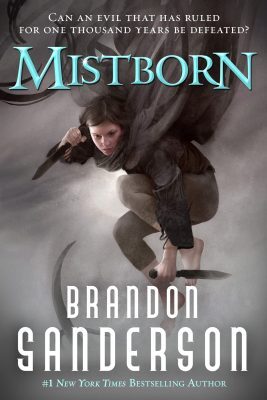
The Longest Book I read this year was Mistborn*, which was fantastic. I haven’t gotten around to reading the rest of the series yet (mostly due to an issue with my library), but Mistborn is solidly on my list of book recommendations when people ask. The worldbuilding, characters, and plot are all excellently crafted and balanced beautifully with one another so that you never feel like any one was lacking or overpowered the others. It’s just a great book, and if you haven’t read it then I highly recommend it.
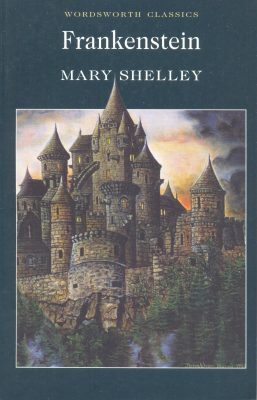
The Most Popular Book I read (according to Goodreads) was Frankenstein*, which… I honestly wasn’t that impressed with. I think I was looking for it to explore different themes than it did, so I was disappointed and felt rather like it squandered its potential. And I wasn’t a fan of Victor’s angst. But those are matters of personal preference, so… eh. It might have been fine, I suppose, I just wasn’t a fan.
RereadsThere are books I read this year that would make my favorites list, but since they’re rereads I almost feel like that’s cheating. So here’s a separate section for those.
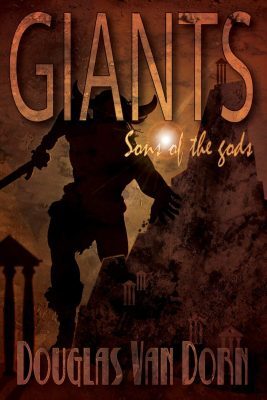
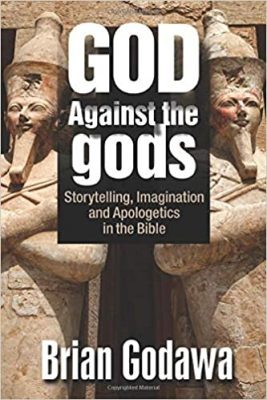
I kicked off the year rereading Giants: Sons of the Gods* by Douglas Van Dorn and God Against the Gods* by Brian Godawa, which I ranked 5-stars and 4-stars respectively.
Giants: Sons of the Gods is a fascinating look at the biblical Nephilim and the historical and biblical evidence behind them, and one of few books of its kind as far as I’m aware.
God Against the Gods looks at the storytelling techniques used in scripture and the ways that the biblical authors subverted the stories and imagery of the cultures around them, which is also super cool. I didn’t totally agree with all of Godawa’s conclusions on some of the topics he covered, but the information behind them was fascinating and worthwhile.
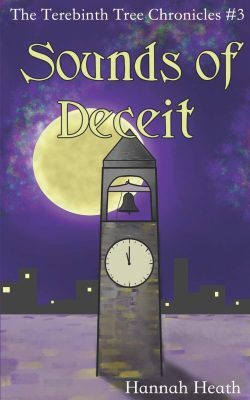
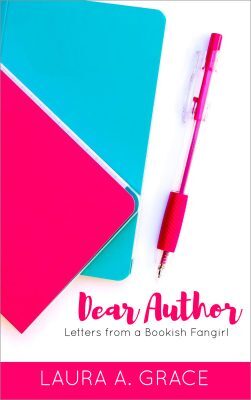
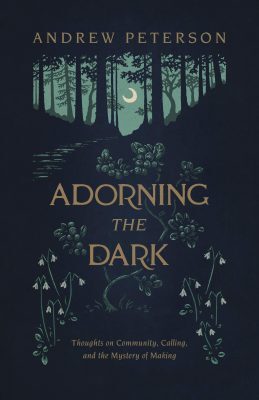
Later in the year, I reread Sounds of Deceit* by Hannah Heath, Dear Author by Laura A. Grace, and Adorning the Dark* by Andrew Peterson. (I reviewed Adorning the Dark after rereading it, since I’d failed to review it the first time.)
Top New Reads
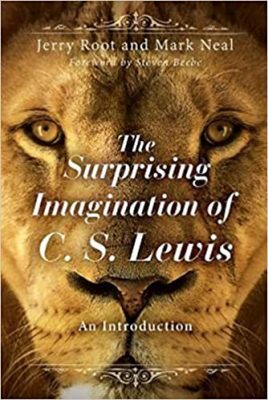
This book is so cool. It’s a look at different categories of/uses for imagination, as defined and exemplified by C.S. Lewis. It’s particularly insightful for creatives whose living comes from imagination, but it has value for anyone since we are all imaginative in at least a few of the ways described in this book.
Plus, the central theme of Lewis’s works means that it has some fascinating insights on his work and the way he wrote some of his projects in particular.
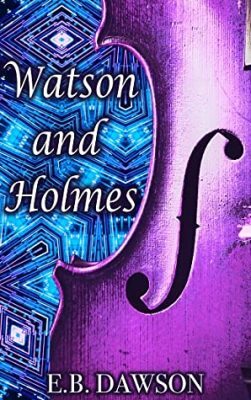
I’m not usually a big fan of sci-fi set in space, but this is how sci-fi in space ought to be done. The cultures in this book aren’t just strange alien creatures for the sake of having alien creatures; they have bearing on the world and the story for their unique features and values, which is how all good worldbuilding should be. Not to mention that the idea of a sci-fi retelling of Sherlock Holmes is just a lot of fun.
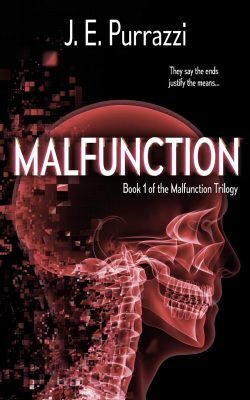
How did it take me this long to finally read this book? Malfunction* is a gritty dystopian story that emphasizes the sanctity of life in so many different ways, and its characters are all so well-rounded and real in their strengths and struggles. Malfunction is rough around the edges, so it’s probably not for everyone, but it’s so well done and the grit of it helps to communicate the type of world where it takes place, and the types of characters that world creates. It’s excellent.
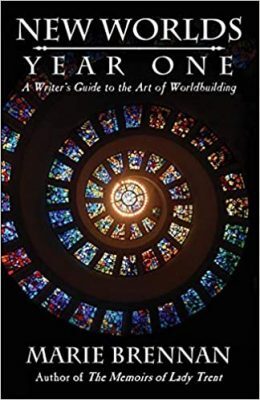
I’ve already talked about this one* before in my post of worldbuilding resources, so I won’t go into too much depth, but Brennan’s background in anthropology gives her study of worldbuilding such depth and detail that might otherwise be missed. (Fair warning: a couple of chapters in here are somewhat mature by necessity, but it’s handled as tactfully as possible in the context and those chapters are easily skipped.)
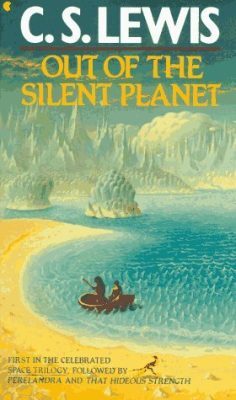
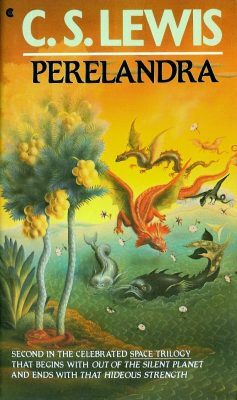
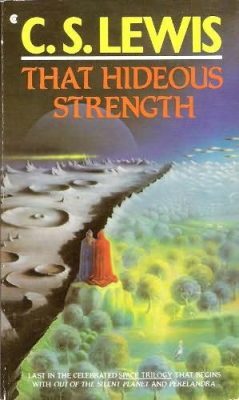
Reading The Surprising Imagination of C.S. Lewis inspired me to read The Space Trilogy and I am so glad I did. Out of the Silent Planet* hooked me with its worldbuilding. (Cue the gasps of shock.) The world of Malacandra and its different species with their cultures and languages was so cool, and it’s a focal point of the story as Ransom is a philologist and he finds those things fascinating. As a reader, you get to experience that wonder right alongside him and learn the same lessons he does by interacting with these strange cultures.
Perelandra‘s* strongest point was the theological debate that takes center stage as Ransom has an extended intellectual battle with a creature attempting to corrupt a world that never fell from its Edenic state of paradise. I believe firmly in the Doctrines of Grace and the concept of predestination, but if ever an argument were to persuade me otherwise… it would be the argument laid out in Perelandra. It was such a thought-provoking read.
And then we close with That Hideous Strength*, which is powerful for its insight into fallen human culture, depravity, and the spiritual conflict behind the earthly conflict that we so often see. It brings the ideas of the series out of the theoretical, the fantasy of other worlds, and into the reality of the world we’re familiar with. It’s super cool.
Anyway. This is one of my new favorite series, and I think it’s highly underrated as Lewis’s works are concerned. XD
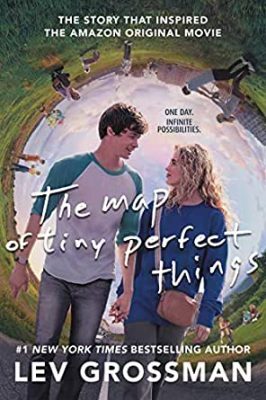
I committed a reader felony with this one and watched the movie first, because I didn’t realize at first that the movie was an adaptation. But after watching and loving the movie, I wanted to read the short story it was based on. And I loved that, too. This story opens up possibilities for really profound questions to be asked, and while they aren’t perfectly resolved here because the full truth is missing in a secular story, they are fascinating questions to consider and seek out answers to. (I actually wrote a whole blog post about unfulfilled desires in YA films, which was inspired by this movie.)
The movie is somewhat different from the short story, but the movie was written by the author of the short story, and their differences lead to the two mediums complementing one another and adding depth to one another. Which is, in my opinion, the mark of a great adaptation.
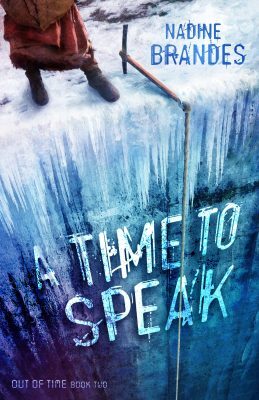
Y’know what… Let me just grab my review for this one*.
Solomon. Parvin’s relationship with Solomon. The themes. The portrayal of faith. The WRITING (so many great lines, man. I need a second copy that I can underline and mark up to my heart’s content). THE ENDING. WHAT WAS THAT. I NEED BOOK THREE ASAP. I hugged this book at least once. I paused many times to squeal or let emotions settle. Have I mentioned SOLOMON??? And there were so many moments, especially toward the end, that gave little peeks at shalom and were so heartwarming and encouraging and real, and I loved those. I loved A Time to Die and I related to Parvin and I loved the faith elements and the worldbuilding and Jude… and A Time to Speak is even better. I would give it six stars if I could. I still related to Parvin. I still loved the faith elements and the worldbuilding, and I liked Solomon even better than Jude (even though Solomon didn’t have a tune chip) and everything that was done so well in the first book was somehow even stronger in this one. It’s simply amazing and encouraging and challenging and needs to be read by everyone.
*cough* I liked it a lot.
(Also, Nadine is one of my favorite authors ever. She’s such a cool human.)
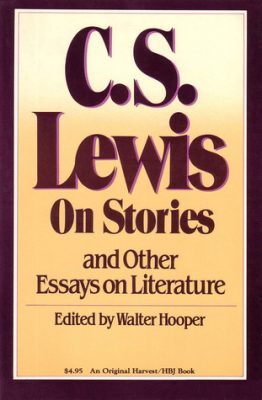
I’ve been reading tons of Lewis’s and Tolkien’s work since the middle of last year, starting with a reread of The Lord of the Rings in July, but I really got going with last December with The Horse and His Boy, and I just… kept reading books by and about the two authors all of this year (and, at least according to my TBR, I’m still going). This collection of essays* was so much fun to read… but my review probably encompasses it all best.
These essays were a genuine joy to read. Lewis had a depth of thought that seems uncommon these days, and it’s refreshing to read writing by authors like Lewis or Tolkien or others with similar worldviews and experience that depth. He also has a great wit, and in his response to James Stephens’ criticism of Chesterton it was so much fun to see Lewis thoroughly dismantle Stephens’ criticisms while still making it abundantly clear how much respect he held for Stephens’ work in general. It also makes me happy to read Lewis and Tolkien’s thoughts in regard to each other’s work; it’s fun to catch a glimpse of how thoroughly they supported each other and how genuinely they enjoyed each other’s stories.
Tolkien and Lewis are both so great to read, and I can’t wait to continue reading their work.
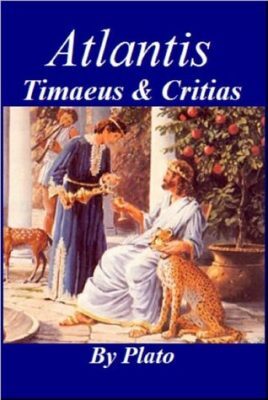
I’ve been meaning to read Plato’s work on Atlantis for years and never got around to finding it, but I finally found a couple free translations this year after reading through Ezekiel and noting similarities between the description of Tyre and what little I remembered from my shallow peeks into Atlantis previously. These dialogues are fascinating. Not only is the Atlantis story intriguing (and it does bear some similarities to Tyre and its curse), but Plato also includes a large portion of dialogue dedicated to the supposed origins of man, and while they’re largely ridiculous… there are some really interesting details that bring scriptural truth to mind.
Since I knew I’d be making note of the parallels between Atlantis and Tyre, I printed out these dialogues, and it ended up far more covered in notes than I’d expected, on a variety of topics. So I had a lot of fun with this one.
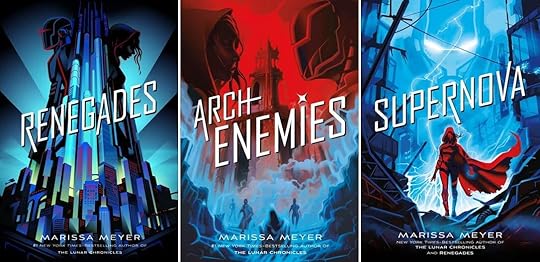
I borrowed Renegades* from my best friend years ago and it had just been sitting on my shelf until a few months ago when I finally picked it up… and it was great! I really enjoyed the thoughtful consideration of issues and the nuance that was acknowledged with regards to the issues presented in a world with superheroes. The ending was weak and out-of-line with the rest of the series, but the majority of all three books was both fun and thought-provoking… which is something often lacking in YA fiction these days.
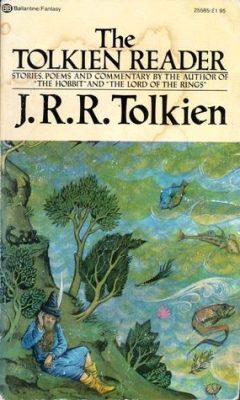
Look! Tolkien! This is one of two works by/about Tolkien that I read this year, the other being J.R.R. Tolkien: Myth, Morality, and Religion by Richard Purtill (which was also really good, but this list is already long XD). The Tolkien Reader* includes, among other things, On Fairy-Stories, Leaf by Niggle, and The Adventures of Tom Bombadil.
On Fairy-Stories is a must-read for any speculative fiction author. Tolkien’s thoughts on the purpose of fantasy and imagination are well-worth reading.
Leaf by Niggle is a great commentary on the life of an artist and the importance of that life as well as the art that comes out of it… because art does come out of life. I quite enjoyed that story.
And I was excited to read The Adventures of Tom Bombadil because I’m waiting on C.R. Wiley’s new book In the House of Tom Bombadil*, which looks amazing… plus I just love Tom’s character in The Fellowship of the Ring*. The actual poems were a bit hit-or-miss for me, personally, but they were fun to read and I should now have a fuller understanding of the character when I read Wiley’s book.
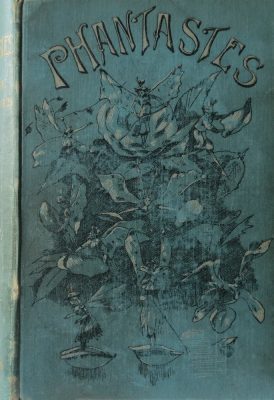
A friend of mine first recommended Phantastes* to me probably a year ago, and then it kept coming up again in conversation with him… and, having read it, I can see that it was for good reason. XD He finally pointed me over to a place to read it on Project Gutenberg, and then it took me forever to read simply because it was digital. XD But I promise that my slowness in getting to it was not a reflection on its quality. Everything about this book is beautiful, from the themes to the story itself to the setting to the prose… And the beauty has a depth to it; it’s beauty in the best sense, of showing truth as it is with skill.
I was actually reading Phantastes at the same time that I read On Fairy-Stories, and they added so much to one another because Phantastes is such a complete example of all of the concepts Tolkien discussed in his essay.
I would recommend Phantastes to pretty much everybody… and it’s worth reading more promptly than I did. ;)
There you have it! A bunch of my favorite books from this year. Have you read any of these? What did you think of them?
What were some of your favorite books this year? (For those of you who are bloggers and have posted your own lists, you’re welcome to share a link in the comments!)
The post Top Reads of 2021 appeared first on Scribes & Archers.

